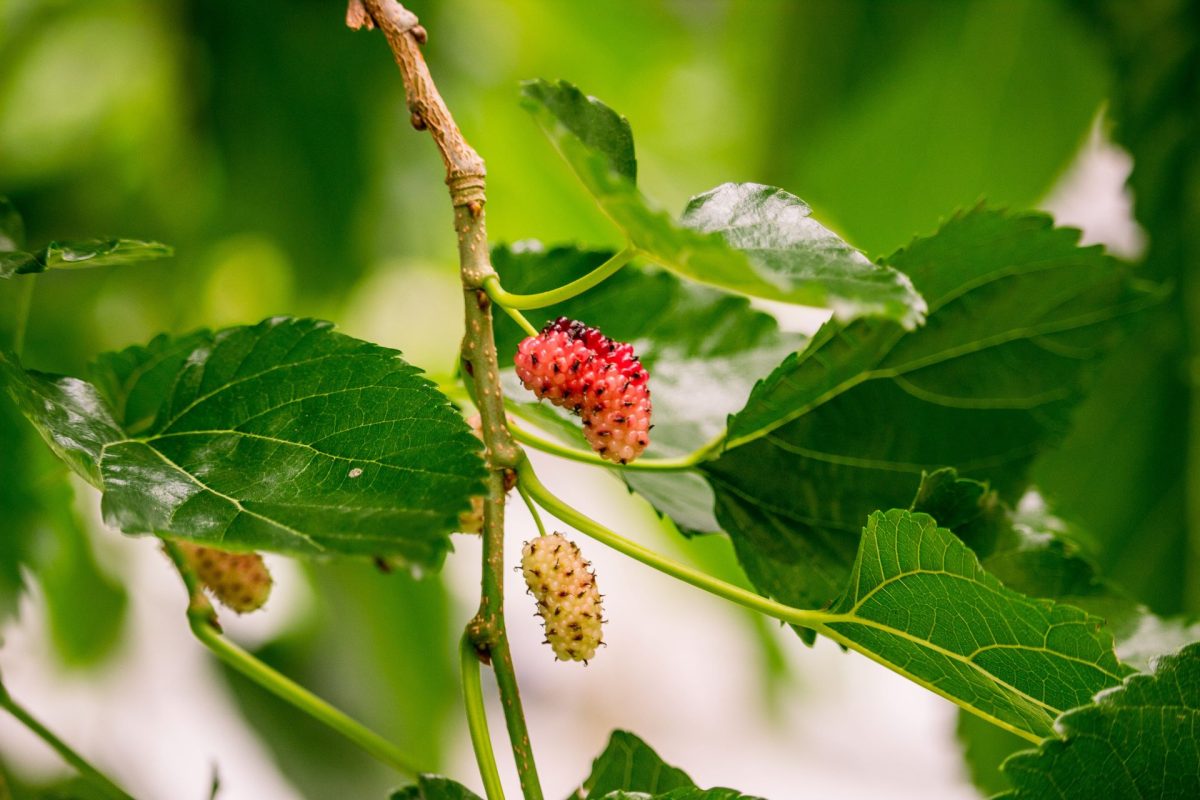The provinces with the highest mulberry production include Malatya, Ankara, Erzincan, Elazığ, Erzurum, Ordu, and Kahramanmaraş. Mulberries are not only consumed fresh but also processed into various nutritious products in the regions where they are grown. Products such as molasses, jam, pastille, mulberry paste, dried mulberries, fruit ice cream, walnut sausage, vinegar, fruit juice concentrate, and spirits are made from mulberries. Especially in recent years, black mulberry juice has become a popular beverage and a sought-after fruit. Despite being a beloved fruit, mulberries have a short shelf life when consumed fresh due to their very soft texture. However, black mulberries, in particular, can be stored in cold storage for up to a month or in deep freezers for an extended period, providing an advantage for industrial processing.
Nutritional Values and Evaluation Methods: Significant nutritional values of fresh mulberry fruit (per 100g) include 93 calories, 0.9g protein, 19.8g carbohydrates, 1.1g fat, 0.9g fiber, 60mg calcium, 1.1mg iron, 0.05mg B1 vitamin, 0.07mg B2 vitamin, 0.2mg B3 vitamin, and 17mg vitamin C. As mulberries in Turkey are not yet characterized in terms of their type, when deciding to establish commercial orchards, there is a lack of diverse rootstock richness and seedlings, as seen in other species. In many countries worldwide, mulberries are primarily used in sericulture, and they are not cultivated for their fruit. Therefore, information about mulberry trees, their fruit, and cultivation is limited. In Turkey, approximately 97% of mulberry production is dominated by white mulberries, while black and red mulberries represent around 3% in terms of production or consumption. Seventy percent of the mulberries produced in the country are used in molasses production, 10% in cocoon production, 3% in pastilles, 4% in dried mulberries, and 5% as fresh table fruit. The remaining 8% is utilized in other production branches.
Ecological Requirements
Mulberries are not very selective in terms of climate and soil conditions, making them suitable for cultivation in almost every province in Turkey.
Climate Requirement:
Mulberries thrive in warm temperate and sunny regions. Mulberry trees can be easily cultivated in many places where fruit trees are grown in Turkey.
Soil Requirement: Mulberry trees grow best in loamy, sandy-loamy, or clay-loamy soils. The pH value of the soil should be between 6.5 and 7. Especially where mulberry trees are planted, the groundwater should not be close to the soil surface.
Cultural Practices
Soil Tillage
Depending on the climate characteristics of the region, open or covered soil tillage systems can be used. If water sources are sufficient, it is recommended to use covered or semi-covered systems. In covered soil tillage, only excessively tall weeds are cut, or regular weed control is carried out, especially under the trees. In the fall and winter months, soil tillage is done once or not at all. Care should be taken when using herbicides, especially in young orchards.
Irrigation
Mulberry trees develop well and yield more fruit when the soil is moist. During the summer season and in hot, dry periods, it is necessary to irrigate the trees to maintain the soil moisture beneficial for the trees. This way, the yield of mulberry trees can be increased by up to 50%. However, the quality of the water given to the trees should be good, and excessive watering should be avoided.
Fertilization
To promote the good growth and increased yield of mulberry trees, nitrogen, phosphorus, and potassium chemical composite fertilizers should be applied. Fertilizer values to be given are determined based on leaf and soil analyzes to be conducted in our orchard. It should not be forgotten that fertilizers can be applied three times in spring, summer, and autumn. In orchards without irrigation facilities, phosphorus and potassium fertilizers are given in the fall, and nitrogen fertilizers are given in the spring.
Pruning
Shape pruning begins when the mulberry saplings planted in our orchard start to develop, and fruit pruning starts when they start to yield. Since pruning plays a crucial role in the development and fruit yield of the trees, it is advisable for the application to be carried out by individuals who are well-acquainted with mulberry trees. Especially considering that white and red mulberry varieties produce longer shoots and grow rapidly, while black mulberry types produce shorter shoots, resulting in slow, healthy, and large trees, appropriate shapes should be given. Excessive severe cuts should not be made to mulberry trees in the fruit-bearing period to prevent the formation of gluttonous shoots. Pruning and training should be done considering the unique growth habits of each species. Harvest: Mulberry trees are harvested by spreading a clean cloth under them and shaking the branches to drop the fruits when they ripen. Mulberry trees should not be struck with sticks during the harvest application, and branches should not be damaged. Additionally, since black mulberry types do not easily break from the branches, manual harvesting is a necessity. Some mulberry types, intended for drying, are harvested on the tree after drying (Oltu-Erzurum).
Disease and Pest Control
Trees of this type, which do not have many diseases, should be carefully monitored, especially for root and root-collar diseases in heavy and wet soils. Mulberry trees are mostly affected by scale insects and powdery mildew. When the density of these pests increases, it is essential to carry out post-harvest or winter control. In some years, it may be necessary to implement pesticide control against pests such as caterpillars, as indicated in technical instructions.

